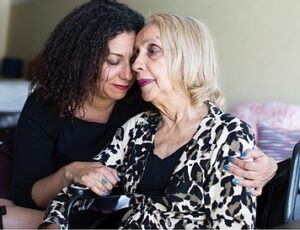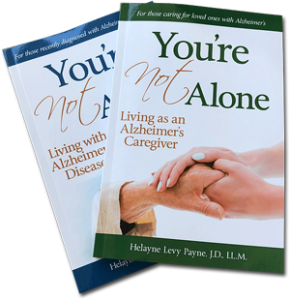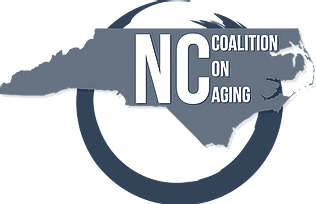
By late 2014, Chabela Lawrence wasn’t doing well. She had mostly stopped cooking and cleaning for herself and began, every so often, to get lost on her way home from the neighborhood coffee shop–the one she’d been to a least a hundred times. The following March, the 74-year-old former catering manager was diagnosed with dementia, and it was clear she needed help. But it was then that she ran headlong into one of the most crushing failures of the U.S. health system: there’s no good way to pay for extended long-term care. Medicare doesn’t cover it. Private health plans don’t cover it. And for most, paying roughly $80,000 out of pocket, the average annual cost for a shared room at a skilled nursing facility, is simply out of the question.
Those in need of prolonged care face a dilemma. They have to be either poor enough to qualify for Medicaid or rich enough to shoulder the cost alone. Anyone who falls between those income extremes is out of luck. And that leaves many Americans vulnerable: 47% of men and 58% of women who are retirement age or older will experience a need for long-term care in the future, according to a February 2016 study by the Department of Health and Human Services. “It’s an insane situation,” Chabela’s daughter Ruby Lawrence says, recounting her mother’s experience. “You either have to be super-rich or super-poor to get benefits.”
The danger of losing one’s life savings to long-term care may be the first challenge families face as their parents and grandparents age, but it isn’t the only one. As 76 million baby boomers creep into retirement, America’s system of looking after its old folks faces a broad, multipronged crisis. From senior living centers to hospice, the country is struggling to adapt a rickety system to handle the demographic wave that is crashing over it. At stake are the health, wealth and dignity of a generation.
The existing safety net for older Americans–a mixture of Social Security, Medicare and Medicaid–was built for a society that no longer exists. When Congress created Social Security in 1935, the average life expectancy in the U.S. was 61; now it is nearly 80. When Congress created Medicare and Medicaid in 1965, it was still common for people to die of acute medical issues, like heart attacks; now many survive those traumas and go on to live, with some assistance, for decades longer. In 1960, the U.S. was overwhelmingly young: just 10% of the population was over 65. By 2040, 1 in 5 of us will be eligible for that senior ticket at the theater.
As more people live longer, the social and economic systems designed to care for them are changing. In midcentury America, women had yet to join the traditional workforce en masse and so were widely expected to keep doing what they’d always done: provide unpaid care to children and ailing relatives at home. Moreover, in the 1960s, a large portion of families had access to stable, fixed pensions in retirement, and about a quarter of all workers were covered by generous, union-negotiated contracts. Staying in the same job for decades was common.
None of that is true anymore. Some 40% of households with children under 18 are now headed by women who are the primary breadwinner. Those women can no longer stay home to care for children or ailing relatives without risking their family’s financial stability. Meanwhile, fixed pensions have all but disappeared, and union membership has fallen by more than half. Nearly 1 in 3 nonretired Americans has no retirement savings at all. “Our current system doesn’t reflect how we’ve changed as a society,” explains Dr. Bruce Chernof, president and CEO of the SCAN Foundation, which advocates for older adults. “So it’s being asked to do all kinds of things it wasn’t designed to do.”
Much of the U.S. economy rides on how this crisis plays out. Spending on long-term care is expected to more than double from 1.3% of GDP to 3% by 2050 as demand increases alongside an aging populace. America’s entrepreneurial system is coming up with myriad new ways to serve this growing demographic of gray-hairs. But in an era of deregulation, companies that profit from the natural, but often unsettling, process of aging and dying aren’t always scrupulous. The result is a social tension: As health care companies seek to reap not only efficiencies but also profits from a jury-rigged, outdated and overburdened system of elder care, how do we protect those who are often most vulnerable to exploitation?
When things don’t work, the results are ugly. In nursing homes and assisted-living centers, ever more ubiquitous arbitration agreements leave the elderly without access to a basic civil trial. Hospice care, beloved by many, is seen as a potential profit center by companies seeking government contracts while providing diminished service to those at the end of their lives. And Medicaid, once intended to be a last-ditch safeguard for the poorest of the poor, is creaking under the weight of new obligations. Medicaid is now the default payer for 61% of all nursing-home residents in the U.S., according to a June 2017 Kaiser Family Foundation report–a demand that’s likely to continue to increase. Meanwhile, adult children already contribute $7,000 to $14,000 a year to caring for an aging parent, according to a 2016 AARP report; that number will likely see an uptick too.
Chabela Lawrence, who passed away in November at 76, won’t bear witness to the worsening crisis. But millions of U.S. families may find themselves facing the same calculation that she and her daughter did. When loved ones need long-term care, how are they going to pay for it? “It’s madness,” Ruby says. “People need to know that this can happen to them.”
This appears in the November 27, 2017 issue of TIME.





















0 comments